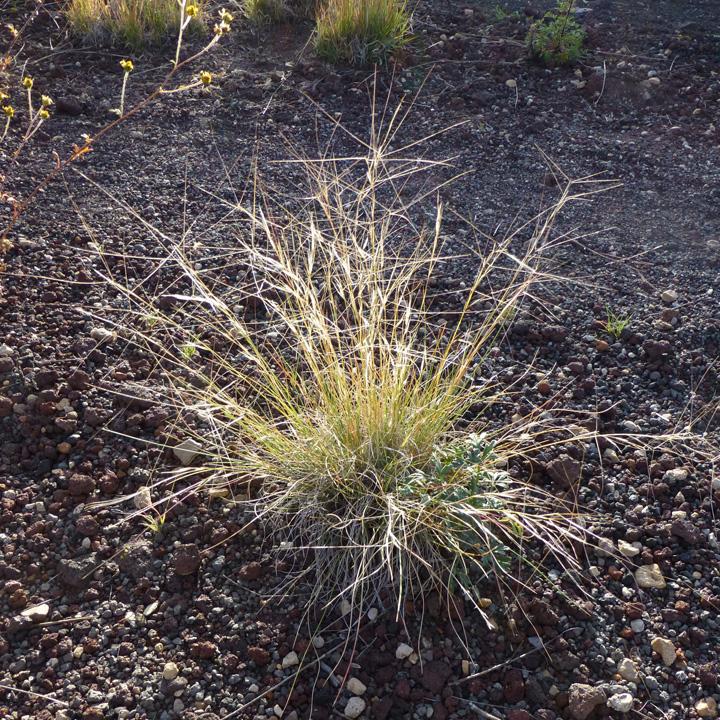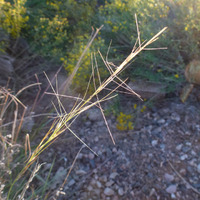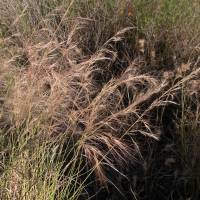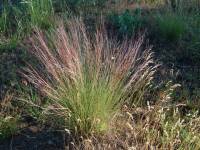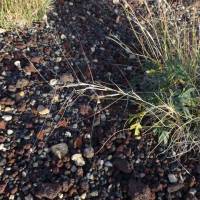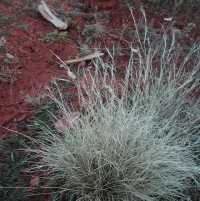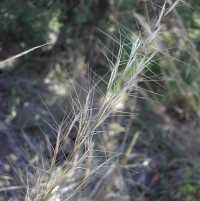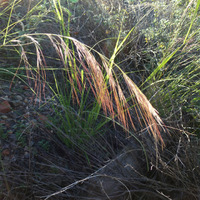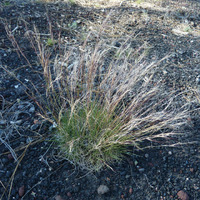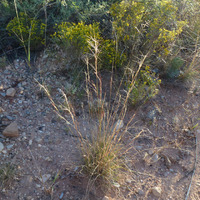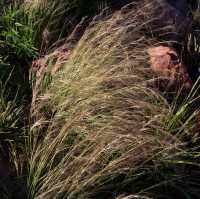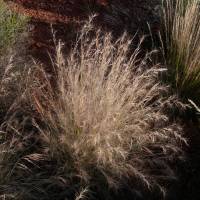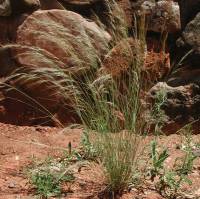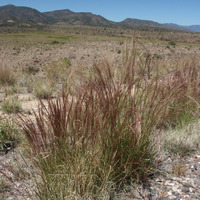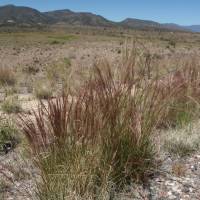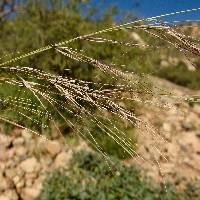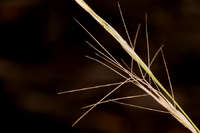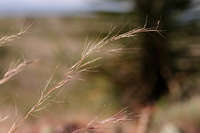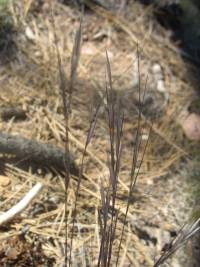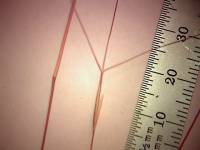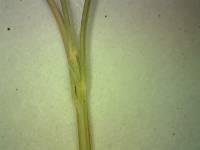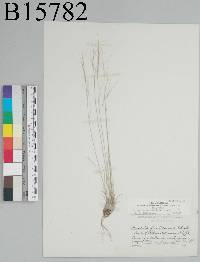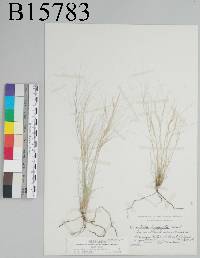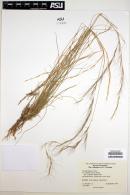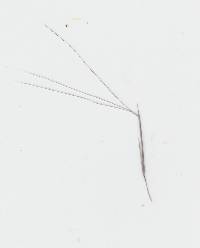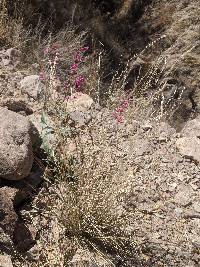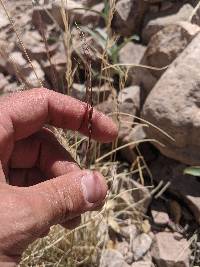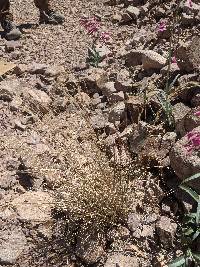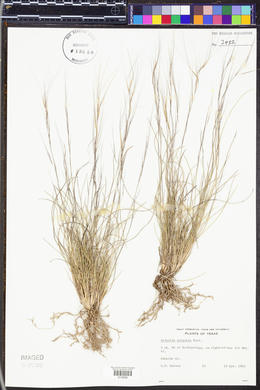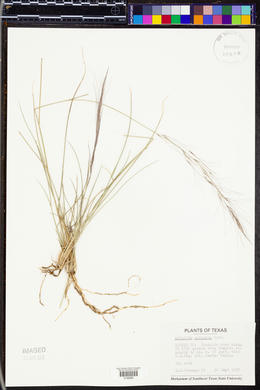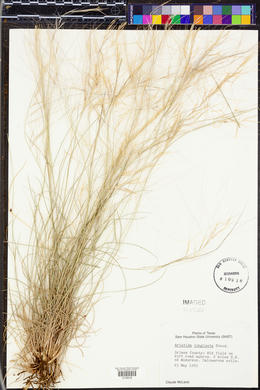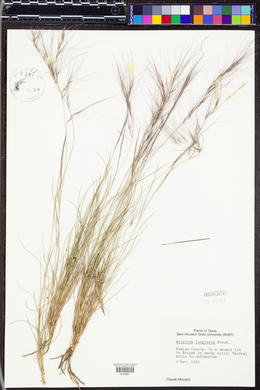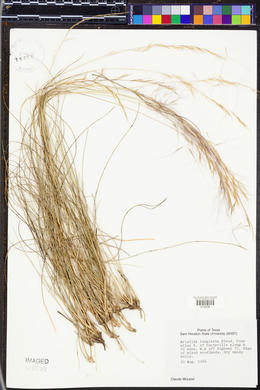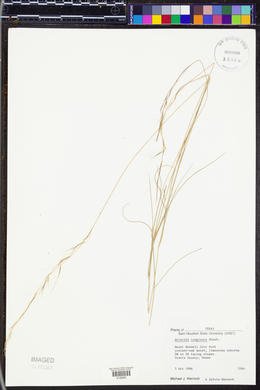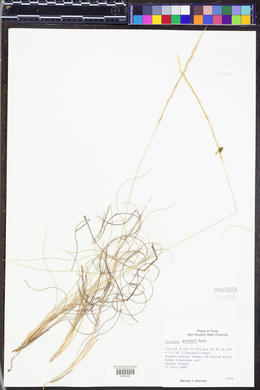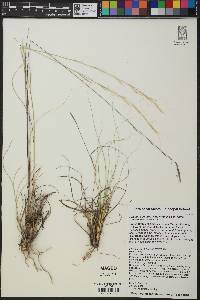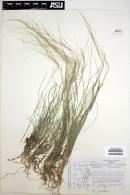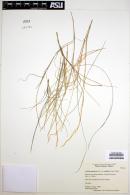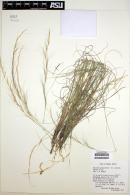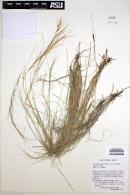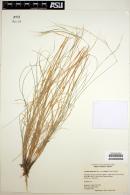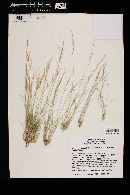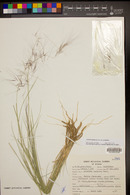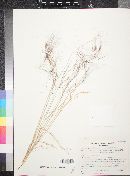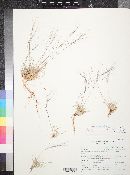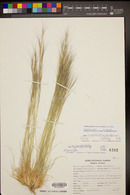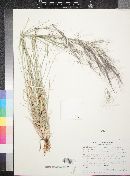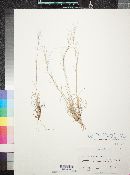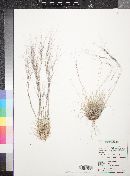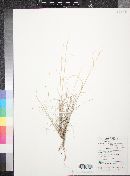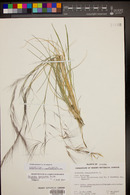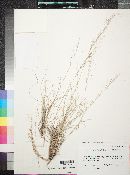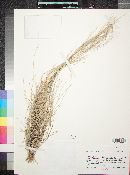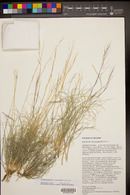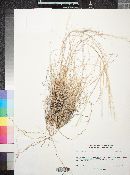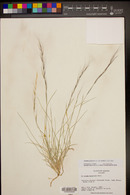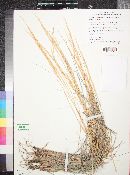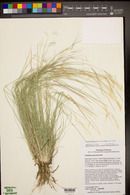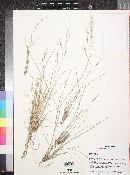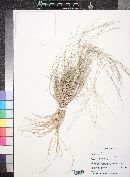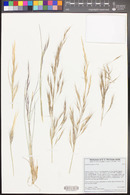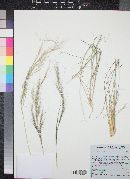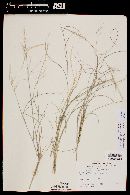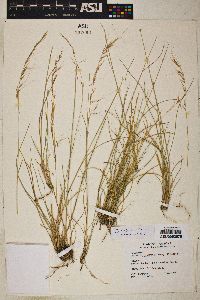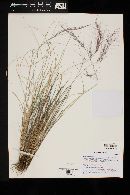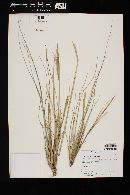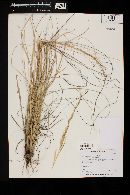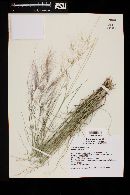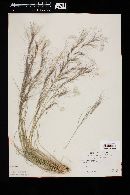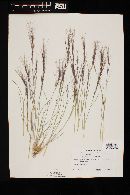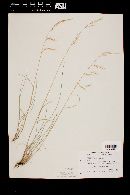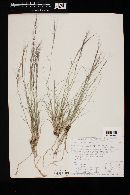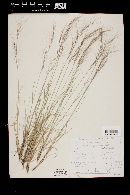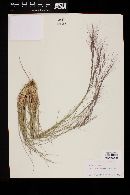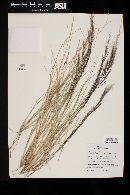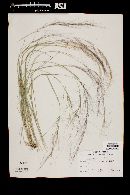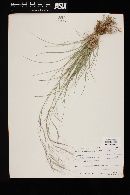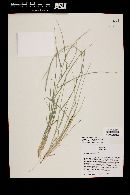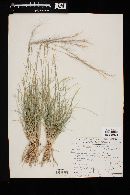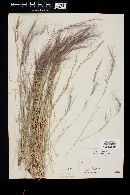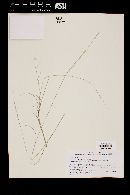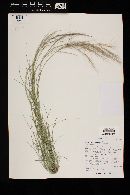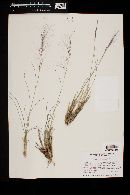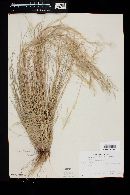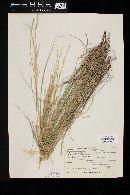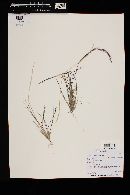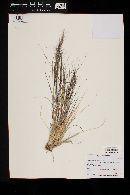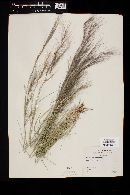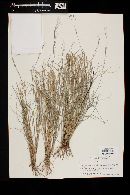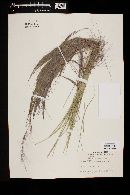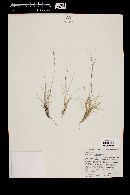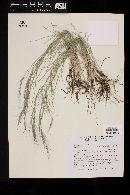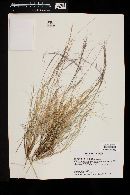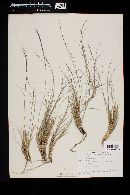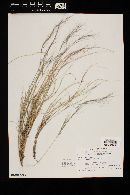Aristida purpurea
|
|
|
|
Family: Poaceae
Purple Three-Awn, more...purple threeawn, Purple 3-awn, red threeawn
[Aristida aequiramea, moreAristida purpurea var. capillarifolia , Aristida purpurea var. micrantha] |
Plants perennial; densely cespitose, without rhizomes. Culms 10-100 cm, erect to ascending, usually unbranched. Leaves mostly basal or mostly cauline; sheaths shorter or longer than the internodes, glabrous, not disintegrating into threadlike fibers at maturity; collars glabrous, or sparsely pilose at the sides with straight hairs; ligules less than 0.5 mm; blades 4-25 cm long, 1-1.5 mm wide, tightly involute to flat, usually glabrous, sometimes scabridulous abaxially, gray-green, lax to curled at maturity. Inflorescences usually sparingly branched panicles, occasionally racemes, 3-30 cm long, 2-12 cm wide, with 2 or more spikelets per node; nodes glabrous or with straight, about 0.5 mm hairs; primary branches 3-6 cm, appressed to divaricate, varying sometimes within a panicle, stiff to flexible, bases appressed or abruptly spreading, usually without axillary pulvini. Spikelets divergent or appressed, with or without axillary pulvini. Glumes usually unequal, lower glumes shorter than the upper glumes, sometimes subequal, light to dark brown or purplish, glabrous, smooth or scabridulous, 1(2)-veined, acuminate, unawned or awned, awns to 1 mm; lower glumes 4-12 mm; upper glumes 7-25 mm; calluses 0.5-1.8 mm; lemmas 6-16 mm, glabrous, scabridulous, or tuberculate, whitish to purplish, apices 0.1-0.8 mm wide, not beaked or the beak less than 3 mm, junction with the awns not conspicuous; awns (8)13-140 mm, ascending to divaricate, not disarticulating at maturity; central awns thicker than the lateral awns; lateral awns (8)13-140 mm, usually subequal to the central awns, occasionally less than 1/3 as long as the central awns; anthers 3, 0.7-2 mm. Caryopses 6-14 mm, tan to chestnut. 2n = 22, 44, 66, 88. Aristida purpurea is composed of several intergrading varieties. Dr. David Bogler, USDA NRCS PLANTS Database Perennials, Terrestrial, not aquatic, Stems nodes swollen or brittle, Stems erect or ascending, Stems caespitose, tufted, or clustered, Stems terete, round in cross section, or polygonal, Stems branching above base or distally at nodes, Stem internodes solid or spongy, Stems with inflorescence less than 1 m tall, Stems, culms, or scapes exceeding basal leaves, Leaves mostly basal, b elow middle of stem, Leaves mostly cauline, Leaves conspicuously 2-ranked, distichous, Leaves sheathing at base, Leaf sheath mostly open, or loose, Leaf sheath smooth, glabrous, Leaf sheath hairy, hispid or prickly, Leaf sheath and blade differentiated, Leaf blades linear, Leaf blades very narrow or filiform, less than 2 mm wide, Leaf blade margins folded, involute, or conduplicate, Leaf blades mostly glabrous, Ligule present, Ligule a fringe of hairs, Inflorescence terminal, Inflorescence a contracted panicle, narrowly paniculate, branches appressed or ascending, Inflorescence solitary, with 1 spike, fascicle, glomerule, head, or cluster per stem or culm, Inflorescence lax, widely spreading, branches drooping, pendulous, Inflorescence with 2-10 branches, Flowers bisexual, Spikelets pedicellate, Spikelets laterally compressed, Spikelet less than 3 mm wide, Spikelets with 1 fertile floret, Spikelets solitary at rachis nodes, Spikelets all alike and fertille, Spikelets bisex ual, Spikelets disarticulating above the glumes, glumes persistent, Spikelets disarticulating beneath or between the florets, Rachilla or pedicel glabrous, Glumes present, empty bracts, Glumes 2 clearly present, Glumes equal or subequal, Glumes equal to or longer than adjacent lemma, Glumes 1 nerved, Lemma coriaceous, firmer or thicker in texture than the glumes, Lemma 3 nerved, Lemma glabrous, Lemma apex acute or acuminate, Lemma distinctly awned, more than 2-3 mm, Lemma with 3 awns, Lemma awns about equal in length, Lemma awn 2-4 cm long or longer, Lemma awned from tip, Lemma awn once geniculate, bent once, Lemma margins inrolled, tightly covering palea and caryopsis, Lemma straight, Callus or base of lemma evidently hairy, Callus hairs shorter than lemma, Palea present, well developed, Palea membranous, hyaline, Palea shorter than lemma, Palea 2 nerved or 2 keeled, Stamens 3, Styles 2-fid, deeply 2-branched, Stigmas 2, Fruit - caryopsis, Caryopsis ellipsoid, longitudinall y grooved, hilum long-linear.
FNA 2007, Allred 1984, Gould 1980 Common Name: purple threeawn Duration: Perennial Nativity: Native Lifeform: Graminoid General: Erect, small, perennial bunchgrass, elliptical stem, can be (but not often) branched at lower nodes, 30-60 cm tall. Vegetative: Blades 0.5 mm wide, 2-8 cm long, rolled, curved, rough, ribs indistinct, margin occasionally hairy, sheath smooth, round, open, ligule ciliate, about 0.5 mm long, collar with hairy margin, bearded. Inflorescence: Panicles 10-25 cm long, flexuous and curving in fruit, weighed down, spikelets reddish-violet; glumes very unequal, lower glume 6-7 mm long, upper 12-15 mm.Lemma 10-11 mm to base of awns; awn column 1-2 mm long, awn 3-4.5 cm long, fine and delicate, deeply colored. Ecology: Rocky or sandy plains and slopes, found commonly along roadsides from 1,000-7,000 ft (305-2135 m); flowers April-October. Distribution: Most of western US south to c MEX. Notes: A. purpurea encompasses a diverse complex of intergrading varieties, many of which are so distinct as to appear as separate species. The complex in our region can be distinguished from other species by the following characteristics: perennial bunchgrass with rolled, thread-like and often curved blades, a ligule with conspicuous hairs, panicles for the most part condensed or contracted and without axillary pulvini (small appendages in the branch axils that force branches open) and purple awns 2-5 cm or even longer, which are equal to almost equal. Awns can cause abscesses to the mouths and nostrils of grazing animals and injury to skin when caught on fur. Ethnobotany: Unknown Etymology: Aristida is from the Latin arista for awn, while purpurea is Latin for purple. Synonyms: None Editor: SBuckley 2010, FSCoburn 2014, AHazelton 2015 Perennial; culms 2-5 dm, very numerous in large tufts; lvs mainly basal, very narrow, usually involute; panicle (excluding the awns) 3-10 cm, narrow or spike-like, with short ascending or appressed branches; first glume 8-13 mm; second glume 15-23 mm, much exceeding the lemma; awns essentially similar and equally divergent, 4-7 cm; 2n =22. Dry prairies and plains; Minn. and Io. to Wash., Calif., and n. Mex. Ours is the widespread var. longiseta (Steud.) Vasey. (A. longiseta) Gleason, Henry A. & Cronquist, Arthur J. 1991. Manual of vascular plants of northeastern United States and adjacent Canada. lxxv + 910 pp. ©The New York Botanical Garden. All rights reserved. Used by permission. |
|
|
|

